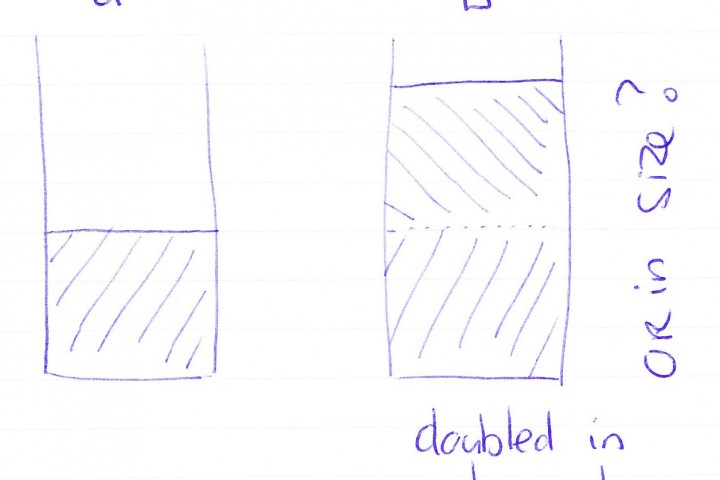
1. (adj.) double
twice as large, heavy, strong, etc.; twofold in size, amount, number, extent, etc.
In lots of bread baking recipes you will encounter a line like this; ‘Let shaped dough rise until it has doubled in size’. The scientist in me always wonders what the recipe writer means. Does the writer of the recipe realize that a round shape, for instance the shape of a boule, increases 8 times! in volume when the boule doubles in diameter. What does ‘double’ (or even ‘almost’ double!) mean in the context of a piece of dough in whatever shape? Twice the diameter? Twice the volume? Twice something?
And what about the word ‘size’, size is not a measurement of anything, size can mean volume, height, weight, etc. all depending on the context. So what does ‘size’ mean in the context of a piece of dough? According to a dictionary ‘double’ means ‘twice the size’, so double in size means; twice in size size. What I do know is that the line ‘rise until it has almost doubled in size’ reads like sheer laziness of the recipe writer!
1. (n.) size
the spatial dimensions, proportions, magnitude, or extent of anything:
the size of a farm.
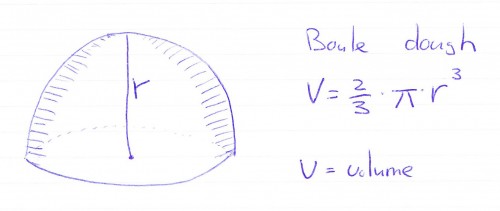
Imagine a measurement cylinder filled with a piece of dough. When you let the yeast do its job this little piece of dough will grow inside the cylinder. As for the dough the only way is up it will slowly fill the cylinder and it is really simple to see when the dough has doubled in volume. It will be when you read twice the number on the measurement cylinder compared to when you started! What has doubled in this experiment is the volume.
Now imagine a piece of dough shaped in a boule. And again we let the yeast do its job and the dough will grow and grow and grow. When will this piece of dough be ‘doubled in size’? With the cylinder it was very easy to see when the volume has doubled but with this round ball shape it is much harder to see when the volume has increased twice. With a batard shape it is even harder to imagine the real mathematical or geometrical truth.
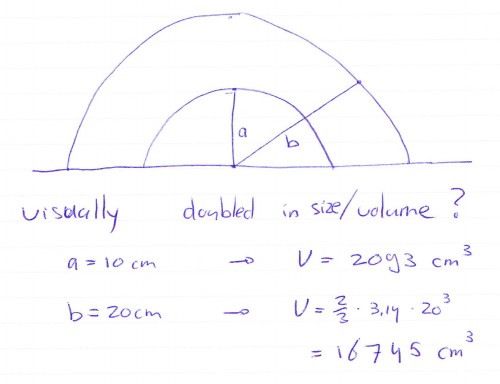
Another mind game. Take a nice lime (the fruit) and imagine it to grow. When will the lime be ‘doubled in size’? When it is the size of a mandarin, an orange, a grapefruit or a watermelon? It is hard to visualize when a round fruit is ‘doubled in size’ in comparison to another fruit.
If we simplify the shape of a dough boule to the geometrical shape of a halved sphere (Wikipedia Sphere) we can calculate the volume of the boule; the formula to calculate the volume of a halved sphere reads;
volume = 2/3 * pi * radius³ ≈ 0.667 * 3.141 * radius * radius * radius
With this we can do some calculations.
When you measure the height of the boule of dough you can use this height with the formula above as the height is mathematically the same as the radius because we have a halved sphere. For my calculations I start with an imaginary boule of dough with a height of 10cm. This gives us a boule of dough with the volume of 2093cm³ which is a little over 2 liters of dough. When you take a boule with a height of 20cm this equals about 16745cm³ which is about 16 liters of dough! So a doubling in diameter equals 8 times the growth in actual volume.
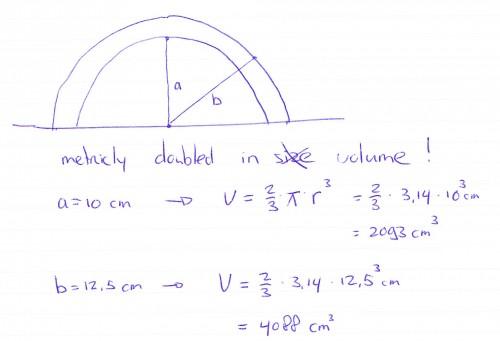
The funny thing is you only need an increase of 2.5cm in height to get a doubling of the volume of boule of dough. A height of 12.5cm gives about 4088cm³ of volume which is about 4 liters of dough. The increase of 2.5cm is hard to notice and you will not perceive this as the dough having ‘doubled in size’.
After this whole rant I still do not have the answer to what recipes writers mean with ‘wait until double in size’. Do they mean double in volume, double in height, they probably mean something like ‘wait until the dough has increased until you think it is enough’.
So, what’s the answer?
The important thing during the final proof is to stop before the gluten network collapses. When the gluten can not hold the amount of carbon dioxide produced by the yeast, the little gluten balloons explode and your bread will deflate before your eyes. The first thing is to control your dough temperature. As the temperature has the biggest influence on dough rising speeds, controlling temperature gives you stable proofing times. Please read; A Few Tips on Dough Temperature. Because I stabilize my dough temperature, my proofing times are more or less the same each time and this takes the guessing out of proofing- and bulk fermentation times.
The next tip is to use the finger poking test;
With your finger gently poke in your dough. If you have a high hydration dough you can first dip your finger in a little bit of flour to prevent sticking.
- If the hole disappears completely: under-proofed
- If the hole dent pops half way back out: proofing is just right
- If the hole stays entirely dented in: over-proofed
It is hard to explain the difference completely. The best way is to learn from experience. Poke as many proofing loaves as possible, and you will figure out what you are looking for. If you apply the finger poke test immediately after shaping, sometimes the hole stays dented, just as it would if the loaf were over-proofed. You can tell the difference by feel, because when proofed the loaf is light, “bubbly” and elastic, whereas right after shaping the loaf is not elastic.
So, proof, poke and bake as much as you can!
Invitation
What is your opinion on double in size? What is your favorite way of testing if your dough is ready for the next phase?
We would love to hear from you and learn from your experience. Please leave a comment.
Ed




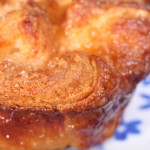
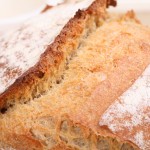
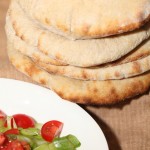
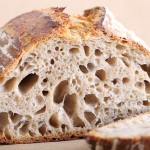
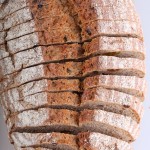
Steph says
i put a small ball of dough in a shot glass & squash it down to the top is flat and fills half the glass. i place the glass on the proofing mat next to the large bowl of dough. it is easy to tell when the shot glass dough has doubled & then you know that your large dough has also doubled!
Weekend Bakers says
Thank you for this tip Steph. It will be easy to try for other bakers.
Marlene Mooy says
Hi, this finger poking trick, does this apply to bulk fermentation, or to proof after shaping, or both? Thank you, Marlene,
Gulfcoastgal says
Your thoughts, please ,
On
using a 4 liter or 6 liter cylinder marked for liter increments using rubberband to mark original size from restaurant supply
Frank Stead says
What a superb piece of writing to debunk a myth that is passed from generation to generation. You have my admiration sir.
Amy says
An easy way to tell if a loaf has doubled is to place a piece into a straight sided jam jar, draw around it with a sharpie or use an elastic band to mark the top, once it has doubled in volume it should be ready.
Robert Berning says
I wanted to understand why over proofed dough collapses and you explained it.
Thank you. I proof dough in a bowl and when it is 1 1 /2 times bigger it has doubled. the 1 1/2 is approximate. It is like an upside down boule.
Art says
So I always assumed it was double in volume because that’s what most of my recipes say. I just visualize it and take it out when I think it has doubled. I skipped over the math because I really didn’t need to know this. But then my engineering curiosity got the best of me. The way I approached the double volume calculation was was to let V2 equal twice V1 and solved for R2. I know you know this and it’s probably what you did. See my calcs.
V1 = 2/3 X R1^3
V2 = 2 X V1 = 2/3 X R2^3 = 2 X 2093 = 4186
solve for R2
R2^3 = 4186/(2/3 x 3.14) = 1999.7
R2 = 12.6 cm
Dave says
Love this! I would be curious to see how various methods correlate. If the finger poke method is a good heuristic, what measure of “double” does an optimally poked dough approximate–e.g., height or volume?
I also assume that the optimal dough proofing is designed to achieve some post-baked criterion (e.g., size, uniformity) related to the air spaces, which I assume is different depending on the type of baked good.
If anyone knows of such an analysis, please let me know.
I expect it is probably most related to volume, but it’s an empirical question.
Another question might be what other measurable criteria (besides outcome) might be used to determine when the dough is optimally proofed. For example, volume is a pretty crude measure that doesn’t necessarily capture differences in methods that are believed to be important such as quick, warm proofing vs slow, refrigerated proof. Both could double the same but if one is better is there any way to measure that difference prior to baking?
Toby Fouks says
I am doing the fermentation in the refrigerator to make it take much longer — colder temperature and less yeast. I was hoping to find a graph online to show how fermentation proceeds over time. I put the dough in containers with measurements and pressed down to see volume — two difference recipes, each about 4 cups. This morning, about 18 hours later, one is at 6 cups and the other [rounded on top] probably around five cups. I’d like to be able to figure out when they have ‘doubled’. I want to bake them at the same time which means the one rising more slowly would be removed from the refrigerator sooner than the other one.
Dan Greisch says
I am a mechanical engineer so I also question some of the old, maybe 100 year old, recipes. It’s likely that the baker that originally wrote the recipe had little formal education so subjective words and phases are common, that’s understandable. The funny thing is people keep blindly following these things even when they are rewritten in modern cookbooks.
Philipp says
When I started aiming for a maximum open crumb, I found a useful „size“-measurement-hack on youtube. To measure volume-increase, you fill 40g of dough in a small cylinder glass, when you are done kneading, before you start bulk. This volume-timer gives you a good enough idea how much your dough has risen regardless the size of the container it is in. I normally aime for double after bulk and bench-rest and double again in the benetton, if an adjustment is needed, I have an idea where to start, if it all works out, easy to repeat next time, regardless the temperatures in my kitchen or the shapes of the loafes, the volume-size-measurement-tool stays pretty accurate.
Cheers, Philipp
Charles Gunter says
I’ve always been unhappy with the ‘doubled in size’ instruction for the reasons you highlight. It’s an old problem similar to the ‘Altar at Delos’ problem from Ancient Greece. Poking is the only way to go. I use a temperature controlled proofing box so proofing is consistent.
Neil says
So pleased to read this. I’ve done the same thought experiments with a measuring cylinder, boule etc, and the maths (the cube root of two (“double”) is only 1.26).
My learning was as you say – poke. And also be judicious about rising times and trust in the oven spring.
Andrea says
I’ve been agonizing over this question for years. Do “good cooks” know enough math to understand what “double in volume “ means? Or do they mean “double in height” or maybe width.
I was just reading this in Joy of Cooking and was hoping for an illustration. No such luck.
Your finger poking method helps. I’ll try it.
Graham says
A very astute observation and explanation. When dealing with dough I would assume that it is Volume that should be “measured”. The fact that size is always referenced, mainly when the dough is in some constraining vessel, banetton or bowl for instance, steers you to look for height gain.
If volume truly is the measurement to be guided by, then us amateurs could use a water submersion device, so that a displacement reading could give an accurate guide.
Although I would expect the water pressure would lead to some deflation of the dough! LoL.
I am assuming that the different types of flours would give a different feel when using the finger rebound test.
I had heard baking described as a science, I think where proving is concerned it is truly a skilled craft and should be admired as such.
Weekend Bakers says
Hello Graham,
Thank you for your insightful observations.
And you are right, as far as we are concerned and our experience goes, proving can be considered a skilled craft and when making certain recipes over and over again, different senses are involved in quite accurately assessing if your dough is ready for baking!
Christo says
Agreed. “Doubling in size” to me simply means the way you look at it. So, in a rectangular pan it would mean double the height. More or less.
For a boule here is an easy formula; New height = Height * 2^(1/3).
Enter it into your calculator like this; 10*2^(1/3) = 12.5992. You can use it for any height.
Read several of your sites and it seems this is the real McCoy. Your instructions are very clear and easy to understand. Tried several other ideas which did not work. I cannot eat sugar and gluten wheat flours are very iffy. Rye works and I need something for energy. Tasty, that is.
Yes, this can work for an effective daily routine. Little time invested with great results!
I know of one man in Durban, South Africa who brought his sour dough ideas from California. Always wondered about this “sour dough thing” and its history there. Why California? Never knew I’ll sorely need it some time. I’ll be back for more.
Thank you.
Weekend Bakers says
Thank you Christo, for sharing your thoughts and experience. And yes, you never no at what point in life you suddenly need certain skills or products that will help you stay healthy. It is a good thing we can share this information with each other all over the world.
Luke O'Reilly says
I enjoyed reading your perspective on the matter. I have a lot of rye flour left over from when I tried to bake sour dough; I baked pretty solid loaves! Today, I baked with dry yeast in sachets and I hope that I haven’t damaged the dough after taking it out of the warm oven and kneading it for about ten seconds. I also included wholemeal flour and white flour. It had certainly doubled in size before I knocked it back….
Weekend Bakers says
Hi Luke,
Hope it turned out OK. We usually use other techniques that handle the dough a little gentle without knocking too much air out of it. Just a question of what you like and what the objective is.
Maybe try one of our recipes? This is one of our favorites:
www.weekendbakery.com/posts…-rustique/
Greetings
Eric S says
I’ve wondered this myself. A few relevant points:
1) the whole proofing until doubled is largely tradition. The author of any such recipe is most likely not presenting this as an unbiased assessment of what they do. They are repeating what they learned and what everyone else says, and I would assume it is at least close enough to what they have learned to do in practice that they either can’t tell it differs, they don’t perceive it as different enough to warrant saying something different, or they aren’t confident enough in their perception of it being different to comment on it.
2) It is easy to judge doubling in diameter. However doubling in diameter strikes me as not realistic. But then I’ve been only making whole wheat bread lately and this does not rise as much as white flour. What do you think? Is proofing dough until double in diameter even possible without out grossly overproofing?
If I’m right that it is not, then surely any baker soon learns that they are not doubling by diameter.
3) Most of us don’t have a good sense of what doubled in volume looks like for a shape like this. (I think you made this point also.) So it would be easy for any bread baker who due to tradition is expecting double in volume to assume whatever it is they learn to do from experience as being double.
So in my opinion the answer is “volume”, but the perception of it is such that this is misleading.
If we did an experiment to arrive what what most people’s sense of what double in volume looked like (with the shape and size of a typical bread recipe), perhaps we would arrive at a “perceived double in volume” that was something larger than true double in volume, and perhaps that would correspond to (or be closer to) what a realistic volume change for properly proofed bread. I would guess this is really the answer, but without such a perception test, there is no, er, proof.
Weekend Bakers says
Thank you Eric for your disquisition and adding your insight and knowledge to the subject.
You are right, tradition is very much key in why this double in size comes back in so many recipes and books.
Of course we agree with your words on volume and the finger poking is still not the most elegant way to test the dough, but with lots of practice and experience you really get to know and recognize these signs with each recipe.
Wishing you many wonderful loaves, proofed to perfection.
Eric S says
Followup on the idea of rising in a cylinder making it easy to quantify an increase in volume: There is a technique that seems to have caught on recently among serious home bakers, of doing exactly this. They let a small portion of their dough rise in exactly such a container, called an “aliquot jar”. There is some tradition behind this technique, such as in the making of panettone where it is particularly critical.
Christina says
I absolutely hate the “until doubled in size” (or volume) instruction in any recipe, it seems like whoever wrote the recipe is simply too lazy to give a proper instruction or relies on the inexperienced baker way too much.
Let’s face it, whoever looks for a recipe most probably has never made it before and has no clue of what the process should be like and it’s not surprising as every type of dough, every type of flour will act differently.
When I’m asked “how long do I prove?”, I say you have to have an instinct and a basic understanding of the processes going on in dough. How far you want to push it? There’s no formulas, no precise time. The ambient temperature and the humidity will affect your rise majorly, unless you work in a professional bakery with proofing cabinets and identical ingredients day to day (even then results vary).
In baking knowledge is precious and experience is irreplaceable, touch and feel your dough, observe every loaf you make, celebrate the beautiful and perfect loaves, and be humbled and learn from your failures. How do you know you do well unless you’ve failed before?
My best way of teaching other is telling them to gently press on the dough, you want your dough to be light and airy, have a slight indent in it’s surface after being pressed on, but it still need to show character (fight you back :), be alive and have just enough resistance for a last push in the oven. I believe when dough is proved to its max it doesn’t show as much spring in the oven, that’s why I prefer to leave just a bit of room for the hot air to expand.
Weekend Bakers says
Hello Christina,
Thank you so much for sharing your knowledge and experience. We could not agree more with what you write! We think the way you teach this to others is the best way of explaining. We love your bit about ‘just enough resistance for the last push in the oven’! Yes that is the sweet spot to take it to the oven and get that perfect bake. It is wonderful how baking is both an exact science and still needs your intuition, senses, both eyes and touch to get it right. And every day is different, even with the same recipes and batch of flour, there’s never an automatic pilot. And you are right when looking at professional bakers in a controlled environment with all the equipment, you still see a lot of ‘varied results’.
Enjoy your teaching and baking!
Ed & Marieke
Christo says
I grew up on Mom baking whole wheat breads for the family. Dad had two special stainless steel bread pans made up, some H 130, W 130, L 450 millimetres to fully use the oven. The doubling in size is a thumb suck which works. It may not be dead accurate, but “a good chef does not needs a recipe”. Baking is an art, not a science. It is very easy to relate size to the degree of fermentation. The test too. How did the last bread flop? no sticky fingers either.
Google the current panic in France on the fate of their baguette’s. The lament is the tasteless white stuff they eat as result of industrialisation. Like champagne and the ballet it is akin to French character.
Weird how things come together. Just yesterday saw a Wiki How questionnaire on how people died in the South of America. Also the result of industrialisation when Niacin was stripped from the flour by “progressive” methods to remove the husk an get a longer shelf life. The result was pellagra in very serious forms. If I remember the figure correctly some 100 000 people died.
Weekend Bakers says
We understand what you are saying and where you come from.
Making your own and if possible buying good quality (organic) ingredients, making and baking your own bread is for us lucky people who can afford to do so, the way to eat tasty and more healthy bread.
Jacob says
I’ve also read that doubling is a characteristics of some recipes and not others though I’ve yet to fully understand this.
The problem I have is when repeating a recipe and I know it should double, but I’ve made a error in the beginning with the levain starter by mixing it a little bit late. This has happened before and I’ve compensated by increasing the bulk, but even with an additional 2 hours it’s not evident that it’s doubled. It was cold overnight in the house, and the dough is cold this morning.
My gut tells me that it is not ready to be proofed, but my brain says that the bulk has been long enough (12%, 16 hours overnight).
The poke test doesn’t help me when the dough has been chilled because it always feels too tough or pliable.
I will either have the trust the recipe and expect the dough to come to life once it warms in the proofing basket, or look to my experience and wait a little more. I will probably go with the former.
Jacob says
It might be because I didn’t wrap the dough container overnight so the bottom of the container was sort of insulated against the floor while the sides were not. Looking at the underside of the dough I can see bubbles, but the bubbles decrease rapidly towards the edges and up the sides. I’ve folded the dough into itself one more time and will let it rest 30 min before doing the final shape.
Weekend Bakers says
Hi Jacob,
We do not know what recipe you are using / making but we have a bit of a hard time following what you are doing or trying to achieve exactly.
But we do have a feeling you should be patient with your (cold) dough and give it the time it needs to develop and proof to its desired size.
Christo says
Your one error was the temperature. Mom had a special set of old blankets and a hot water bottle for wintertime. Kneaded at night, put it to bed, knocked back and baked in the morning.
Stands to reason. You preserve your starter in the fridge once it is alive. Then you get it alive again when you bake by refreshing it. And back into the fridge again.
Size is a by-product of the gases formed by the living bacteria. They eat the dough . . . microbial wind, so to speak, with the sole effect of inflating your bread. This will not affect weight at all.
Fred Musumba says
Hi I have a question let me put it as a layman I want to start no knead artisan bread bakery ,so let’s say am using 1kg of flour ifollow all the procedures after six hours I’ll the dough weigh 2kg ?then i transfer to baking containers each 200grams will it be able to double again giving me a final rise of 400 grams before i bake?
Weekend Bakers says
Hello Fred,
Sorry, we do not understand your question exactly. Dough does not really increase in weight because it rises / proofs, it stays more or less the same, it just increases in volume, due to the air trapped in the dough.
Imelda Fagin says
Hello. This was fascinating, although I admit that my eyes glazed over for the mathematical parts. Since you say it doubles based on volume, could I simply measure the side of my proofing bowl (really my salad bowl) with the dough in it and use a measuring tape to show when that number is doubled?
Weekend Bakers says
Hi Imelda,
What is comes down to in general is how ‘silly’ it is to wait for dough to ‘double in size’ or measure the volume, when you want to know if the dough has proofed enough. Plus we show this measuring is really hard and deceptive, unless you put your dough in a perfect cylinder shape. Also, think about different dough types made with different flours, they will all act different and increase in volume more or less.
So that is why we advice to use the above method with the poking test and controlling the dough temperature to get it right.